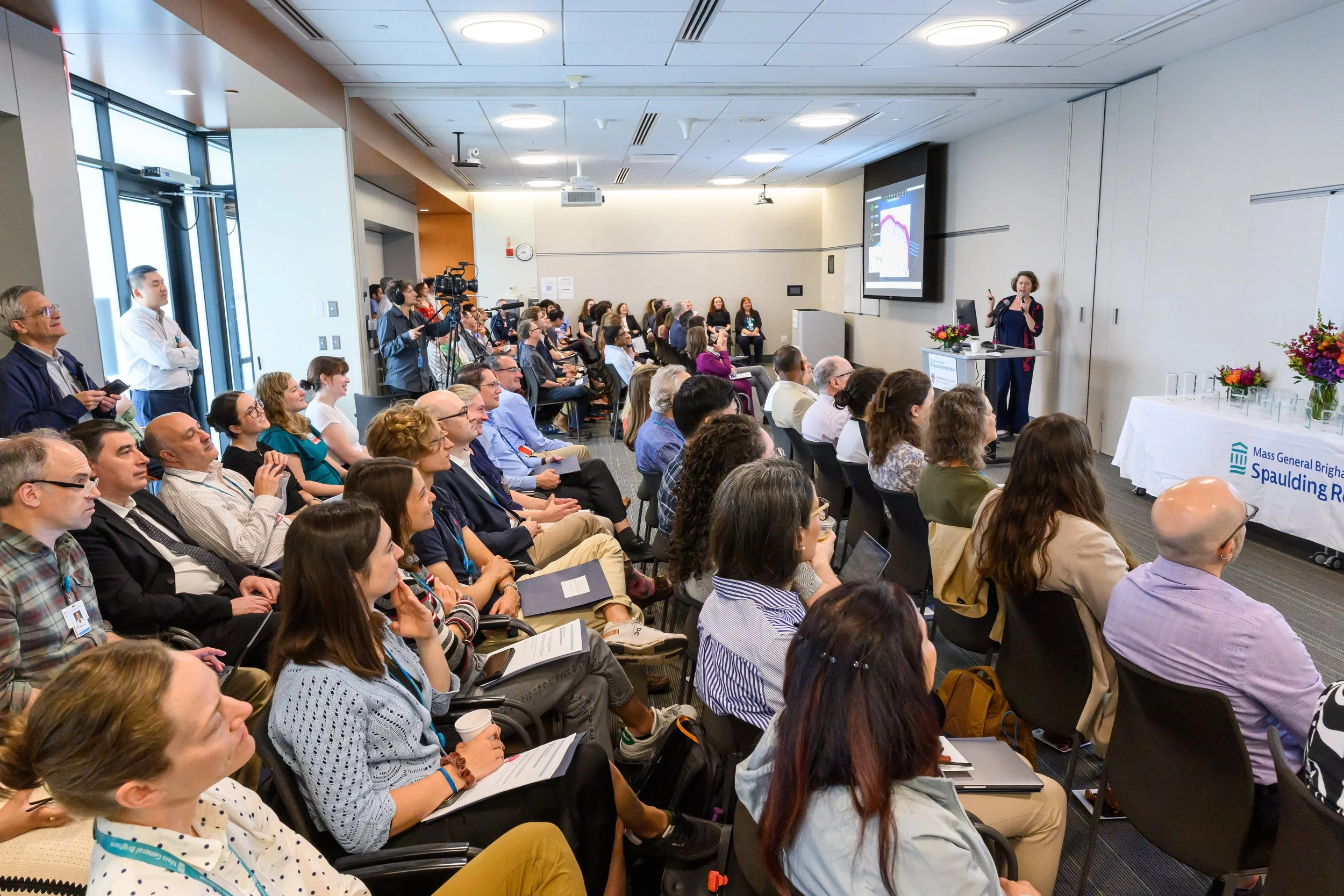Breakthrough in low back pain research presented at PM&R Research Day
Low back pain affects 70 million Americans every year and is the leading cause of ambulatory opioid prescribing.
90% of low back pain is nonspecific, having no known cause.
A new theory presented by Dr. Amy Baxter suggests fascia traps low back pain nerves.
A wearable combining therapies to improve circulation (heat, weight-bearing) with fascia and spine-activating mechanical stimulation (M-Stim®) prevented and restored function in half of those with chronic pain.
BOSTON, MA — June 6, 2025 — A recent study presented at Spaulding Rehabilitation Hospital’s PM&R Research & Education Day introduced a novel physiologic framework for understanding and treating chronic low back pain.
Drawing from over 20 years of pain research, Dr. Amy Baxter presented findings from her NIH-funded randomized controlled trial to prevent opioid prescribing through low back pain relief.
“We anticipated a vibration wearable with thermal options would stop transmission of pain through neuromodulation, and give patients options to reduce their opioid use,” noted Baxter, whose previous invention, Buzzy, uses this mechanism for needle pain relief. She continued:
“When a few subjects’ pain abruptly resolved, they’d start twisting, testing for pain. We suspected our treatment released something mechanical that was trapping the nerves.”
The trial randomized chiropractic patients to a well-known low back pain device, transcutaneous electrical nerve stimulation (TENS), or a new mechanical stimulation (M-Stim) device with three frequencies of motors and multiple thermal or pressure options. Adults with moderate-to-severe chronic (115) or acute (44) low back pain used their assigned device for 30 minutes daily over 28 days, with pain and disability tracked for up to six months.
Her proposed model of chronic low back pain highlights the role of fascia, the layer of tissue between skin and muscle, in the progression from acute to chronic pain and disability. This expands previous findings of dysfunctional spinal muscles and fascia, incorporating a new discovery that free nerves have anchors. "More pain comes from nerves in the fascia than muscles or skin," Baxter says. “Usually, fascia slides. When muscles get injured, the fascia stiffens to protect them, and the gliding layer gets sticky. Nerves normally slide through this layer, but if they get stuck, any movement pulls the whole anchored complex, causing pain until the fascia slides again.”
Stiff fascia is present in most people with chronic low back pain. 90% of chronic low back pain is nonspecific, and only one out of 10 non-invasive treatments are effective. While both groups experienced early pain relief, M-Stim significantly outperformed TENS in preventing chronic pain and disability, particularly in extreme groups.
BMI over 30
Chronic pain lasting more than 5 years
Having failed 3 or more back pain treatments
High severity, as defined by NIH Research Task Force criteria
“Other researchers have done excellent work describing how muscles and fascia change in low back pain. It’s known that heat and movement cause the sticky fascia to liquify, allowing your muscles to move more smoothly. By applying temperature and M-Stim over the entire low back area through a rigid plate, we think it liquifies the layer all at once. Over time, the improvement of blood flow and the stimulation, or just the lack of pain, can lead to muscle recovery,” Baxter hypothesized.
The talk further explained that mechanical stimulation at multiple harmonic frequencies engages neuromotor pathways, enhances blood flow, and activates mechanosensitive ion channels such as Piezo1. Baxter noted that this approach contrasts with traditional neuromodulatory strategies, which target spinal gating without addressing underlying structural contributors.
Low back pain remains the leading global cause of disability and the most common driver of outpatient opioid prescribing. If replicated, Baxter’s findings suggest that noninvasive, fascia-focused therapies like M-Stim may offer a scalable solution to reduce disability and opioid exposure in early low back pain management.
The full study is registered at ClinicalTrials.gov (NCT04491175). The findings have not yet appeared in a peer-reviewed journal.
Media Contact: Cate Crutcher, Harmonic Scientific, CCrutcher@HarmonicScientific.com, +1 877-805-2899
Study Registration: ClinicalTrials.gov NCT04491175
Funding: National Institutes of Health HEAL Grants R44DA049631 and R44DA058952




